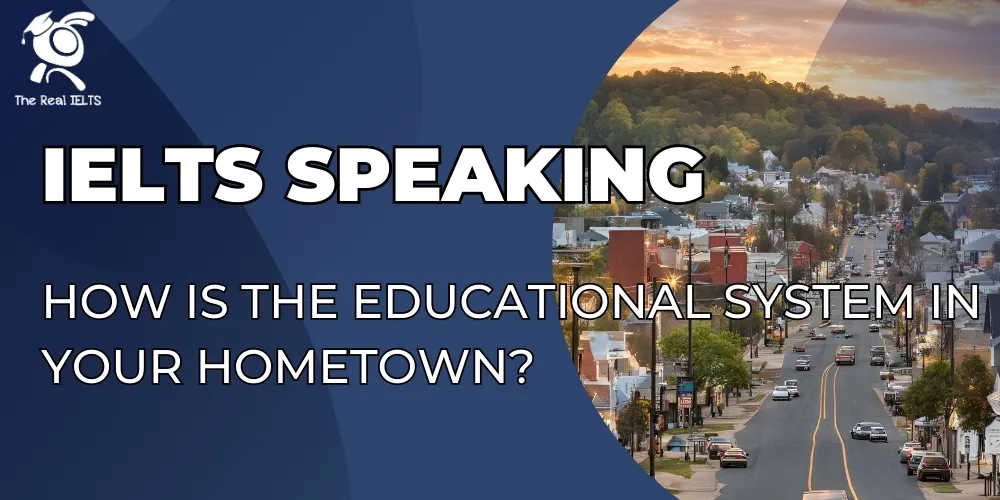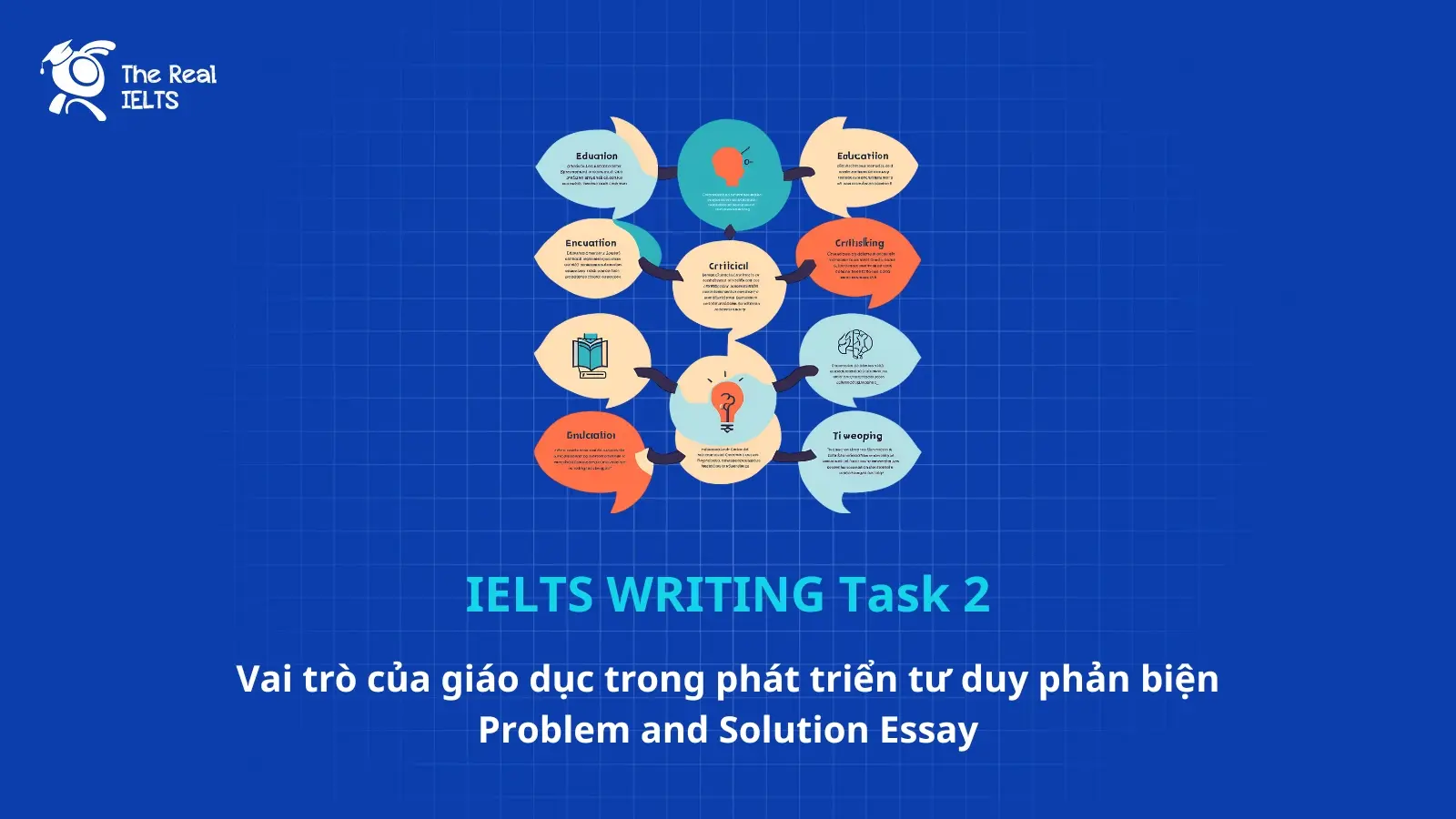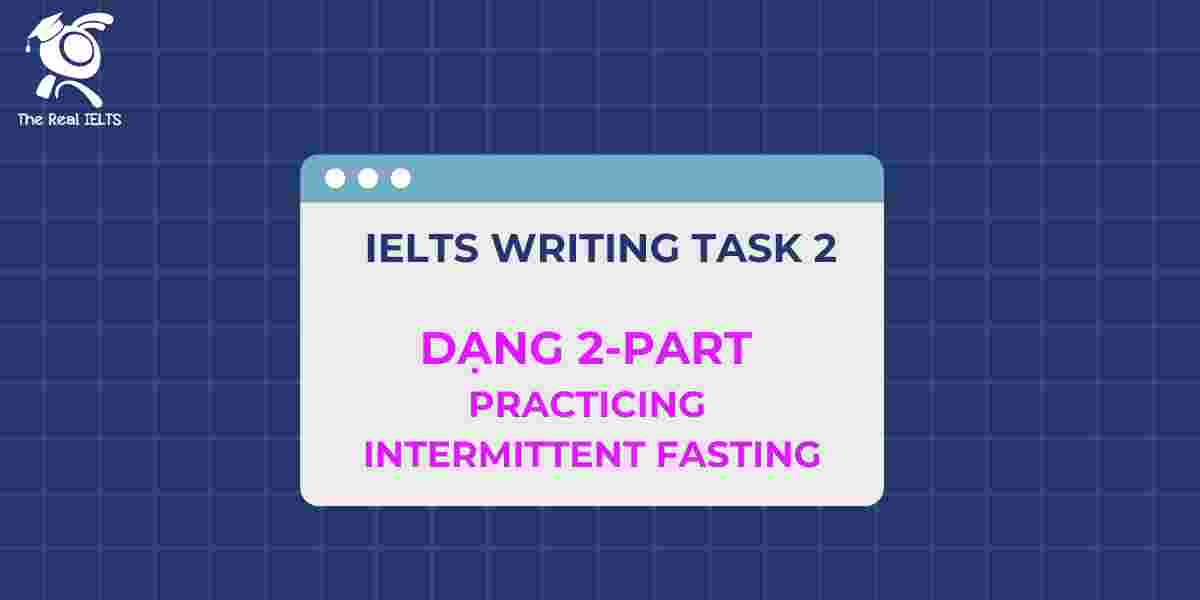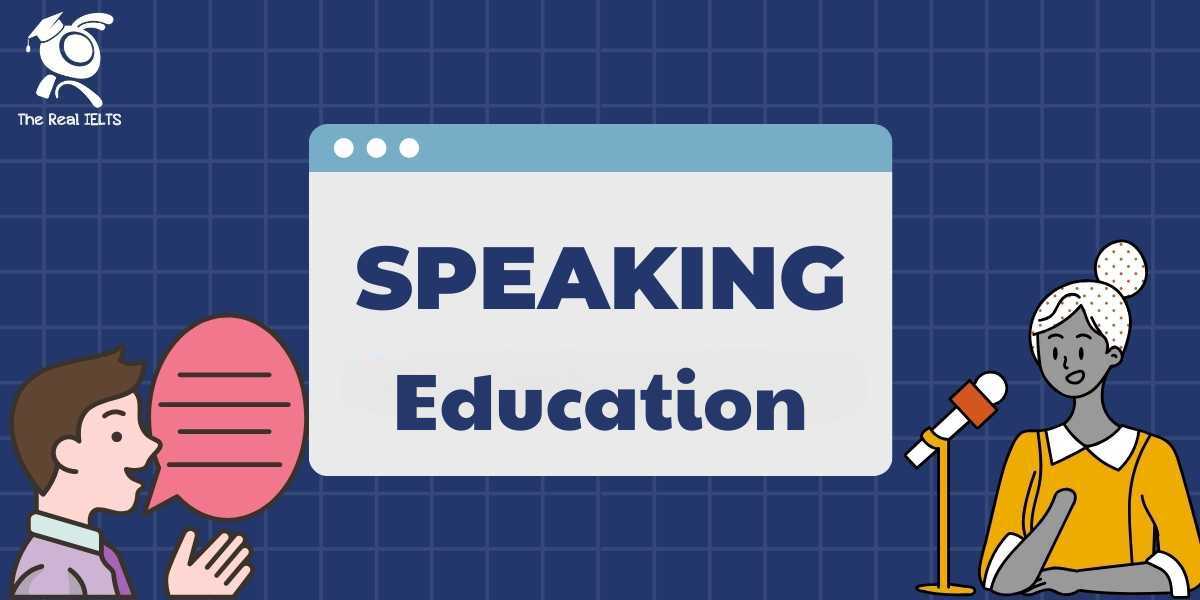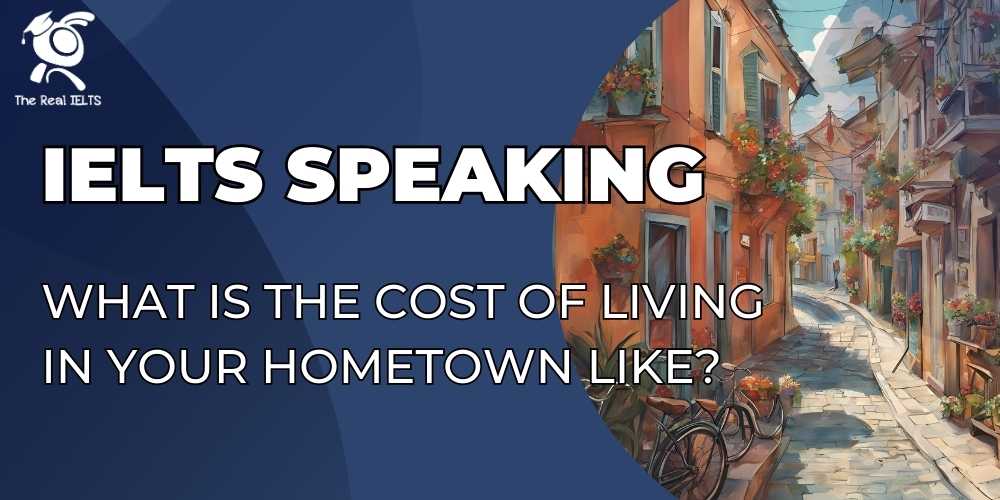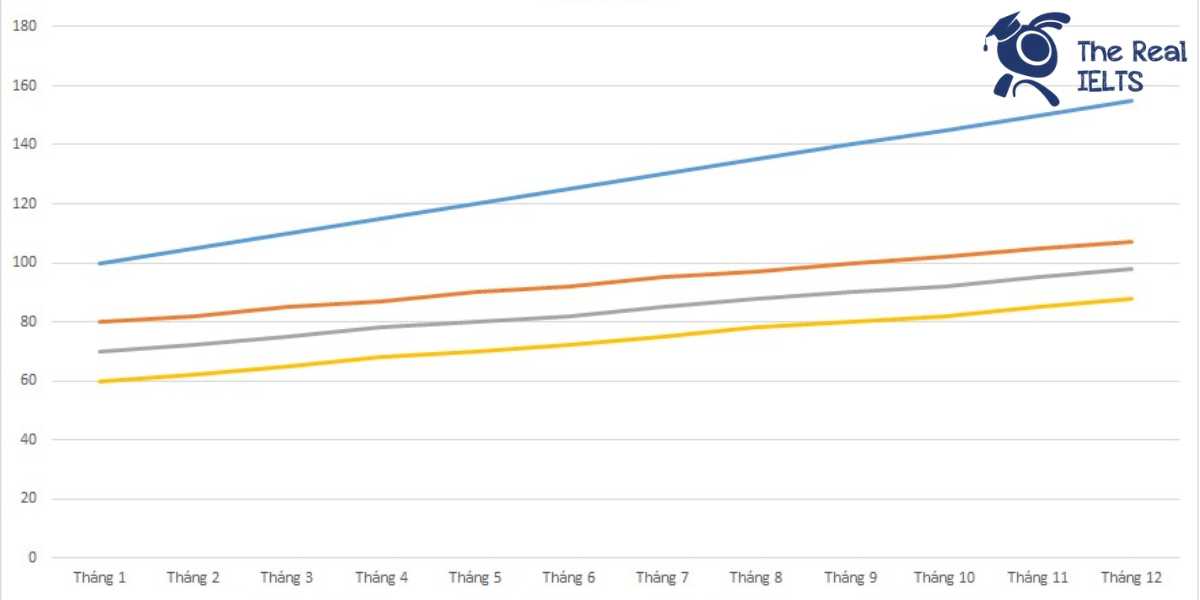Bài viết IELTS Speaking này sẽ giới thiệu hệ thống giáo dục tại quê hương, nhấn mạnh chất lượng giảng dạy, cơ sở hạ tầng, và những cải tiến gần đây để hỗ trợ học sinh tốt nhất.
Đọc thêm các bài luyện thi IELTS khác.
Đọc thêm câu hỏi khác tại: IELTS Speaking Part 1: Introduction and Interview chủ đề Your hometown.
Đọc thêm: IELTS Speaking: How do people in your hometown celebrate weddings?
Câu trả lời cho IELTS Speaking: How is the educational system in your hometown?
Ví dụ 1
The educational system in my hometown is structured similarly to the national system, with some unique local characteristics. It typically includes three main levels: primary, secondary, and tertiary education. Starting with primary school, children usually enroll at the age of six and spend five years developing foundational skills in subjects like mathematics, Vietnamese, and basic science. The focus at this stage is on building essential literacy and numeracy skills.
Secondary education is divided into two stages: lower secondary, which lasts four years, and upper secondary, which lasts three years. In lower secondary school, students broaden their knowledge base with additional subjects like biology, geography, and history, while also having some exposure to foreign languages, particularly English. By the time they reach upper secondary school, students begin to focus more on preparing for the national university entrance examination, which is a highly competitive test that determines their eligibility for higher education.
One of the strengths of the system in my hometown is the emphasis on academic excellence. There are many extracurricular classes and tutoring options available to help students excel, particularly in science, technology, engineering, and mathematics (STEM) subjects. This can be beneficial for those who aim to pursue competitive careers or study abroad.
However, the system also has some challenges. The reliance on rote learning and memorization often overshadows critical thinking and creativity. Moreover, academic pressure can be intense, especially for students in their final years of secondary school. Many parents invest heavily in private lessons to ensure their children perform well in exams, which can add financial and emotional stress to families.
In terms of tertiary education, my hometown has several reputable universities and colleges. These institutions offer a variety of programs, from technical training to more academic degrees in fields like medicine, law, and business. However, many students aspire to study in larger cities or abroad, as they perceive these opportunities to provide better resources and career prospects.
Overall, while the educational system in my hometown has its merits, such as a strong focus on academic achievement, it could benefit from reforms to encourage a more balanced and innovative learning environment. Addressing these issues could better prepare students for the demands of a rapidly changing global economy.
Ví dụ 2
The educational system in my hometown is well-structured and follows the national framework, but it has some unique local features. It is divided into three main levels: primary, secondary, and tertiary education.
Primary education begins at the age of six and lasts for five years. At this stage, children are taught fundamental skills like reading, writing, and mathematics. Schools here emphasize creating a strong foundation for lifelong learning, and extracurricular activities such as art and music are also introduced to make education more holistic.
Secondary education is divided into lower secondary, lasting four years, and upper secondary, which lasts three years. During lower secondary, students study a wide range of subjects, including natural sciences, literature, and social studies, with English being a mandatory subject. In upper secondary, students have the option to specialize in specific streams, such as natural sciences or social sciences, depending on their interests and career goals. A major focus of this stage is preparing students for the national university entrance exam, which plays a critical role in determining their future.
One notable aspect of education in my hometown is the strong emphasis on academic performance. Schools often encourage students to achieve high grades, and many parents enroll their children in extra classes to gain a competitive edge. This has its advantages, as students tend to perform well academically, but it also puts considerable pressure on them.
For tertiary education, there are several universities and colleges offering diverse programs, such as engineering, business, and healthcare. However, many students choose to pursue higher education in larger cities or even abroad, as they believe these options provide better career opportunities.
In conclusion, while the educational system in my hometown is rigorous and produces academically capable students, it could benefit from fostering creativity and practical skills. This would better equip students for the challenges of the modern world.
Ví dụ 3
The educational system in my hometown is quite comprehensive and aligns with the national structure. It is divided into primary, secondary, and tertiary levels, with each stage designed to build upon the previous one.
Children typically begin primary school at the age of six, which lasts for five years. At this stage, the focus is on developing basic literacy and numeracy skills. Subjects like Vietnamese, mathematics, and moral education are prioritized, alongside activities such as art and physical education to encourage a balanced development.
Secondary education is split into lower and upper secondary levels. Lower secondary lasts four years and exposes students to a broader range of subjects, including natural and social sciences, history, and foreign languages, primarily English. Upper secondary, which lasts three years, allows students to choose a specialization, such as the natural sciences or social sciences, depending on their future aspirations. The final goal of this stage is to prepare students for the highly competitive national university entrance examination, which is often seen as a major milestone in a student’s academic journey.
One of the highlights of the educational system in my hometown is the dedication of teachers and the availability of extracurricular programs. Many schools offer clubs and activities, such as sports, debate, and science competitions, which help students develop teamwork and leadership skills. However, there are some drawbacks. The system heavily emphasizes exams and academic performance, often leading to stress among students. Creativity and practical skills, while encouraged in theory, are sometimes overshadowed by rote learning and memorization.
For tertiary education, my hometown is home to a few reputable universities and vocational colleges. These institutions provide a wide range of programs, from engineering and technology to business and education. While many students choose to stay local for higher education, others aspire to study in larger cities or abroad for more advanced opportunities.
Overall, the educational system in my hometown is solid and provides a good foundation for students. However, there is room for improvement, particularly in promoting innovation, critical thinking, and reducing the pressure on students. A more balanced approach could better prepare them for the demands of the modern workforce.
Ví dụ 4
The educational system in my hometown is well-organized and offers a clear pathway for students from early education to higher studies. It follows the national structure but has some unique features that cater to local needs.
Education starts with kindergarten, where children as young as three are introduced to basic social and cognitive skills. After that, they move on to primary school at the age of six. Primary education lasts for five years and focuses on foundational subjects such as Vietnamese, mathematics, and science. Teachers also emphasize moral education and physical activities to ensure holistic development.
Secondary education is divided into two stages: lower secondary and upper secondary. Lower secondary lasts four years, where students are exposed to a wide range of subjects, including literature, geography, and foreign languages, particularly English. Upper secondary, lasting three years, becomes more specialized. Students often choose a stream—either natural sciences or social sciences—based on their academic strengths and career aspirations. The primary aim at this stage is to prepare for the national university entrance exam, which plays a crucial role in shaping their future.
One unique aspect of the system in my hometown is the strong community support for education. Parents are highly involved in their children’s learning and often enroll them in private tutoring or extracurricular classes to enhance their skills. Schools also host events like science fairs and cultural activities to encourage students to explore beyond the classroom.
However, the system faces challenges. The heavy reliance on exams can create intense pressure for students, sometimes limiting their creativity and problem-solving abilities. Additionally, resources in rural areas may not be as developed as those in urban centers, leading to disparities in educational opportunities.
For tertiary education, my hometown has a few reputable universities and colleges offering a variety of programs. However, many students aim to study in larger cities or even abroad to access better resources and career prospects.
In summary, the educational system in my hometown provides a strong foundation for academic success, but it could benefit from reforms to reduce exam pressure and encourage critical thinking. These improvements would better prepare students for the demands of a rapidly changing world.


